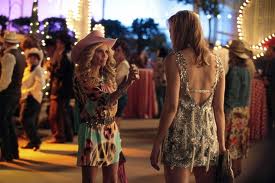Mama Kat asked me today, “How did your love affair with Coffee begin?” That’s a really good question, but ironically, a funny thing happened on the way to being sixty. I forget when I drank my first coffee, but I still remember that I pretty much can’t live without it now.
My husband is partly to blame for my addiction to coffee. We’ve become connoisseurs of the different Starbucks blends — venti, dark, and black is my order. He prefers decaf and I live for the kick of caffeine. We shop carefully for whole beans, always on the lookout for a sale. When we travel, he scouts out the Starbucks locations on his smart phone or maps them out on his computer before we leave. We plan our driving breaks around the visits to Starbucks, knowing they will have good coffee, won’t sneer because we bring in our own reusable mugs, and we can depend on clean bathrooms.
At the Sissinghurst Castle Farmhouse bed and breakfast in England where we stayed during the summer of 2011, we were always served coffee in a sprightly little press pot, so I decided to buy one for Christmas. I searched and searched for a coffee press large enough to satisfy our coffee habit. I wanted to make two fresh mugs for each of us, with one being decaf and the other caf. I hoped the freshly pressed coffee would satisfy our coffee hunger and that we wouldn’t just continue to drink the dregs of the big coffeemaker pot out of habit. That hasn’t worked out so well, as we are still using our big Gevalia coffeemaker and are each still sacrificing for the other — to caf or not to caf is an important question in our thirty-year marriage.
The second part of Mama Kat’s prompt is easier to remember. She continued the question by providing an alternative — “Or Diet Coke or Tea or whatever your beverage of choice might be.” My true beverage of choice is the nectar of the gods, a good wine. I blame it all on moving to California in 1974 and discovering wineries, and my love for wine has progressed from the Boone’s Farm Apple Wine, Mateus, and Lancers of our college days to the fine wines from around the world to which we have access (and can better afford) today.
One of our most recent trips to a winery was in southeast England, where some amazing wine is made. Our host at Sissinghurst Castle Farmhouse is also the CEO of Chapel Downs Winery, and I blogged about our visit here.
 The bookends of my day are a strong jolt of joe in the morning and slow sips of liquid terroir in the evening. What’s not to love?
The bookends of my day are a strong jolt of joe in the morning and slow sips of liquid terroir in the evening. What’s not to love?
I’m linked up to Mama Kat’s Writer’s Workshop today. Please stop by and spread some comment love around to my friends.






















